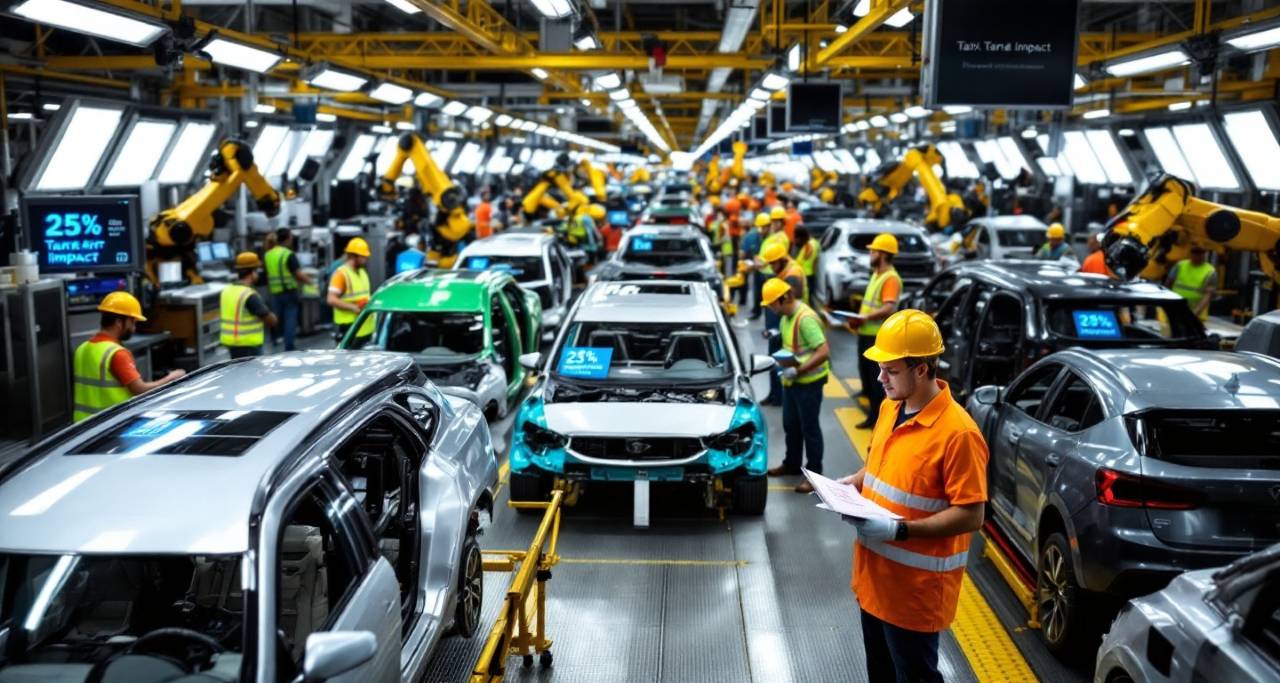
The automotive world is reeling after President Trump’s sweeping 25% tariff on imported vehicles and parts kicked in today. Dubbed “Liberation Day” by the administration, the April 2nd policy shift promises to fundamentally alter what Americans pay for cars and how automakers structure their businesses.
Walking through a Detroit dealership yesterday, I watched as salespeople huddled around computer screens, frantically updating pricing. “We’re basically rewriting our entire inventory overnight,” sighed Mark Hernandez, a veteran sales manager. “Some models are jumping $8,000 to $10,000 just like that.”
The numbers are staggering. Last year, the U.S. imported $474 billion in automotive products, with $220 billion of that in passenger vehicles alone. Mexico, Japan, South Korea, Canada and Germany – all longtime allies – supply the bulk of these imports.
“There’s no such thing as a 100% American car anymore,” explained Tanya Rodriguez, an industry analyst I spoke with while researching this piece. “Even vehicles assembled in Alabama or Michigan contain transmissions from Mexico, electronics from Japan, or wiring harnesses made overseas.”
General Motors faces perhaps the steepest challenge. The Detroit giant imports roughly 55% of vehicles it sells to American consumers, with hundreds of thousands coming from plants in Mexico and Canada. Their stock dropped 7% yesterday as investors digested the news.
At a Toyota dealership in Phoenix, the manager showed me pricing updates for their popular Tacoma pickup. “We sold 230,000 of these last year, all built in Mexico. Now we’re looking at a $7,500 price bump minimum.”
Even Tesla, often considered the most “American” automaker with nearly 88% domestic content in its Model 3 Performance, won’t escape unscathed. CEO Elon Musk acknowledged on social media that “the tariff impact on Tesla is still significant” due to imported components like specialized batteries.
The ripple effects extend beyond new car lots. Used vehicle prices are expected to surge as buyers seek alternatives to pricier new models. Repair costs will climb too, with 44% of collision parts coming from overseas suppliers. Insurance premiums could jump 19% according to industry forecasts – this after rates already rose 11% in February.
For consumers like Jennifer Wilkins, a nurse I met shopping for a replacement for her aging Honda, the timing couldn’t be worse. “I’ve been saving for two years,” she told me. “Now everything in my price range just jumped $5,000 overnight.”
Dealerships report frantic activity as buyers rush to purchase vehicles before price increases take full effect. “Our phones haven’t stopped ringing,” said Carlos Mendez, sales director at a multi-brand dealership in Chicago. “People understand this isn’t temporary – these prices are the new normal.”
Industry experts predict the tariffs will reshape manufacturing decisions for years to come. Some production may eventually shift to U.S. soil, but the transition would take years and billions in investment.
Meanwhile, European and Asian trading partners are already threatening retaliatory measures, raising concerns about a broader trade war that could further damage global supply chains still recovering from pandemic disruptions.
For now, American car buyers face a stark new reality: the era of affordable imports appears to be over, and the full impact of these tariffs is just beginning to be felt across the economy.
